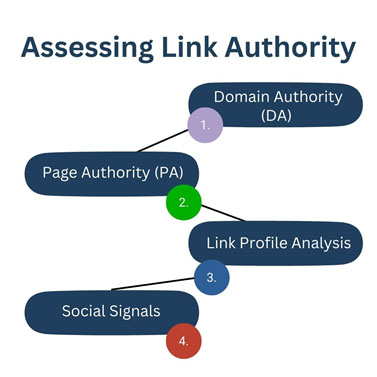Introduction
In the dynamic world of search engine optimization (SEO), backlinks remain a cornerstone for enhancing website visibility and authority. However, not all backlinks are created equal. Manual auditing of backlinks is indispensable for ensuring the quality and effectiveness of a website’s link profile. The initial step in this process involves meticulously evaluating the relevance and authority of the linking websites.
While they hold immense potential for boosting a site’s visibility, the proliferation of low-quality or irrelevant backlinks can undermine its ranking and reputation. Manual backlink auditing emerges as a crucial practice, allowing website owners to discern between beneficial and detrimental links.
By scrutinizing the relevance and authority of linking websites, SEO professionals can fine-tune their link-building strategies, ensuring that each backlink contributes meaningfully to the site’s overall authority and trustworthiness. This initial step sets the foundation for a comprehensive audit, guiding subsequent actions to optimize the link profile and enhance the website’s standing in search engine results pages.
Understanding Backlink relevance
Backlink relevance refers to the thematic alignment between the linking website and the target website. A backlink from a website with content closely related to the target website’s niche holds greater value in the eyes of search engines. Here’s how to evaluate relevance:
- Thematic Analysis: Conduct a thorough examination of the linking website’s content and ascertain its primary theme or topics. Compare these with the target website’s focus areas.
- Keyword Alignment: Assess whether the linking website incorporates keywords relevant to the target website. Keyword similarity strengthens the thematic connection between the two sites.
- Contextual Placement: Determine if the backlink is embedded within contextually relevant content. A backlink integrated naturally within informative content adds more value than those placed haphazardly.
Assessing link authority
Link authority signifies the credibility and influence of the linking website. Backlinks from authoritative domains carry more weight and contribute significantly to a website’s SEO efforts. Here’s how to gauge link authority:

- Domain Authority (DA): DA scores range from 0 to 100, with higher scores indicating stronger authority. Websites with higher DA scores are deemed more credible and influential within their respective niches. By evaluating the DA of linking websites, SEO practitioners can prioritize backlinks from domains with higher authority, thereby bolstering their own website’s credibility and visibility.
- Page Authority (PA): PA scores provide insights into the specific influence wielded by the page containing the backlink. Pages with high PA scores are likely to have greater relevance and authority within their niche, making backlinks from such pages particularly valuable in enhancing a website’s SEO efforts.
- Link Profile Analysis: Conducting a comprehensive analysis of the linking website’s backlink profile offers valuable insights into its authority and trustworthiness. A healthy link profile characterized by a diverse range of high-quality inbound links indicates that the website is recognized and respected by other authoritative sources within its industry. Conversely, websites with spammy or low-quality backlinks may signal a lack of credibility, potentially diminishing the authority passed through their backlinks.
- Social Signals: In addition to traditional SEO metrics, social signals can also serve as indicators of a website’s authority and influence. Active engagement and a strong presence on social media platforms suggest that the website is trusted and valued by its audience. Websites with robust social signals are more likely to attract organic backlinks from reputable sources, further enhancing their overall authority and SEO performance.
The auditing process: Step by step
Now that we understand the principles behind evaluating relevance and authority, let’s delve into the systematic process of manually auditing backlinks:
- Compile Backlink Data: Gather comprehensive data on all backlinks pointing to the target website using tools like Ahrefs, SEMrush, or Google Search Console.
- Identify Linking Domains: Group backlinks based on their respective linking domains to facilitate efficient analysis.
- Relevance Assessment: Review each linking domain to determine its thematic relevance to the target website. Disregard backlinks from unrelated or spammy sources.
- Authority Evaluation: Employ DA, PA, and other relevant metrics to assess the authority of each linking domain and individual pages.
- Quality Check: Scrutinize the quality of backlinks based on factors such as link placement, anchor text diversity, and the linking website’s overall trustworthiness.
- Disavow Harmful Links: In cases where low-quality or toxic backlinks are identified, consider disavowing them to prevent negative SEO impacts.
- Monitor Progress: Regularly monitor the website’s backlink profile for any changes and continue refining the link acquisition strategy.
Conclusion
Manual auditing of backlinks is a fundamental aspect of maintaining a healthy and effective link profile. By diligently evaluating the relevance and authority of linking websites, website owners and SEO professionals can ensure that their backlink portfolio contributes positively to their online visibility and credibility. Embrace the process of backlink auditing as a strategic investment in the long-term success of your digital presence.